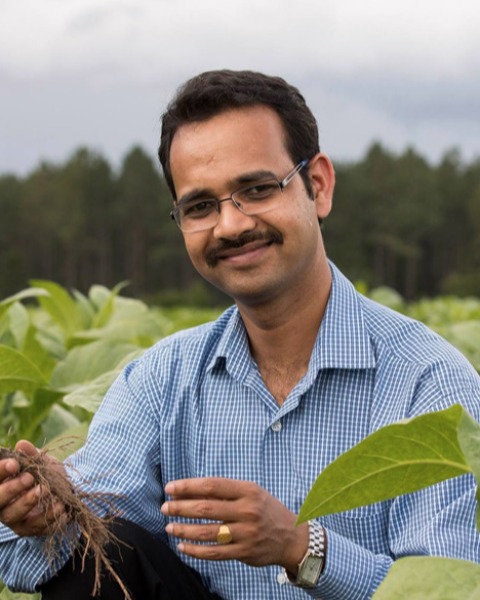Plant-Insect Ecosystems
Student Competition 10-Minute Paper
Detection of viruliferous thrips transmitting tomato spotted wilt orthotospovirus (TSWV) under field conditions in peanut
- YC
Yi-Ju Chen
PhD candidate
University of Georgia
Griffin, Georgia 
Rajagopalbabu Srinivasan
Professor
University of Georgia
Griffin, Georgia
Mark R. Abney
Associate Professor, Extension Specialist
University of Georgia
Tifton, Georgia- SB
Soraya Bertioli
University of Georgia
Athens, Georgia 
Sudeep Bag
Assistant Professor (crop virology)
University of Georgia
Tifton, Georgia
Presenting Author(s)
Co-Author(s)
Tobacco thrips, Frankliniella fusca (Hinds), transmits tomato spotted wilt orthotospovirus (TSWV) to peanut (Arachis hypogaea L.). TSWV infection in peanut causes spotted wilt –a devastating disease in peanut. Tomato spotted wilt orthotospovirus is a species in the genus Orthotospovirus and family Tospoviridae. Thrips in the family Thripide and Order Thysanoptera transmit TSWV in a persistent and propagative manner. Complex interactions between thrips and TSWV such as stage-specific acquisition determine which thrips can transmit TSWV (transmitters). The spatial and temporal distribution of thrips transmitters could play an important role in TSWV spread. Thrips sampled on yellow sticky cards could help assess temporal and spatial distribution of TSWV transmitters. Prior to attempting to standardize sticky card-based TSWV detection and quantitation in thrips, the RT-PCR technique was optimized under laboratory conditions using lab-reared viruliferous thrips that acquired TSWV at the first instar stage (transmitters). In the process, it came to attention that TSWV loads in thrips varied with TSWV loads in field-collected TSWV-infected leaves used to rear viruliferous thrips. TSWV loads in the leaves also varied temporally through the production season. TSWV was detected in > 50% of thrips in July and virus loads in thrips were much higher in July than during the mid-and/or late season. The impact of this temporal variation in TSWV loads in field-collected peanut leaf tissue on TSWV acquisition by thrips and subsequent inoculation to non-infected peanut seedlings was evaluated. These efforts provided further insights into better understanding TSWV epidemics in peanut.


